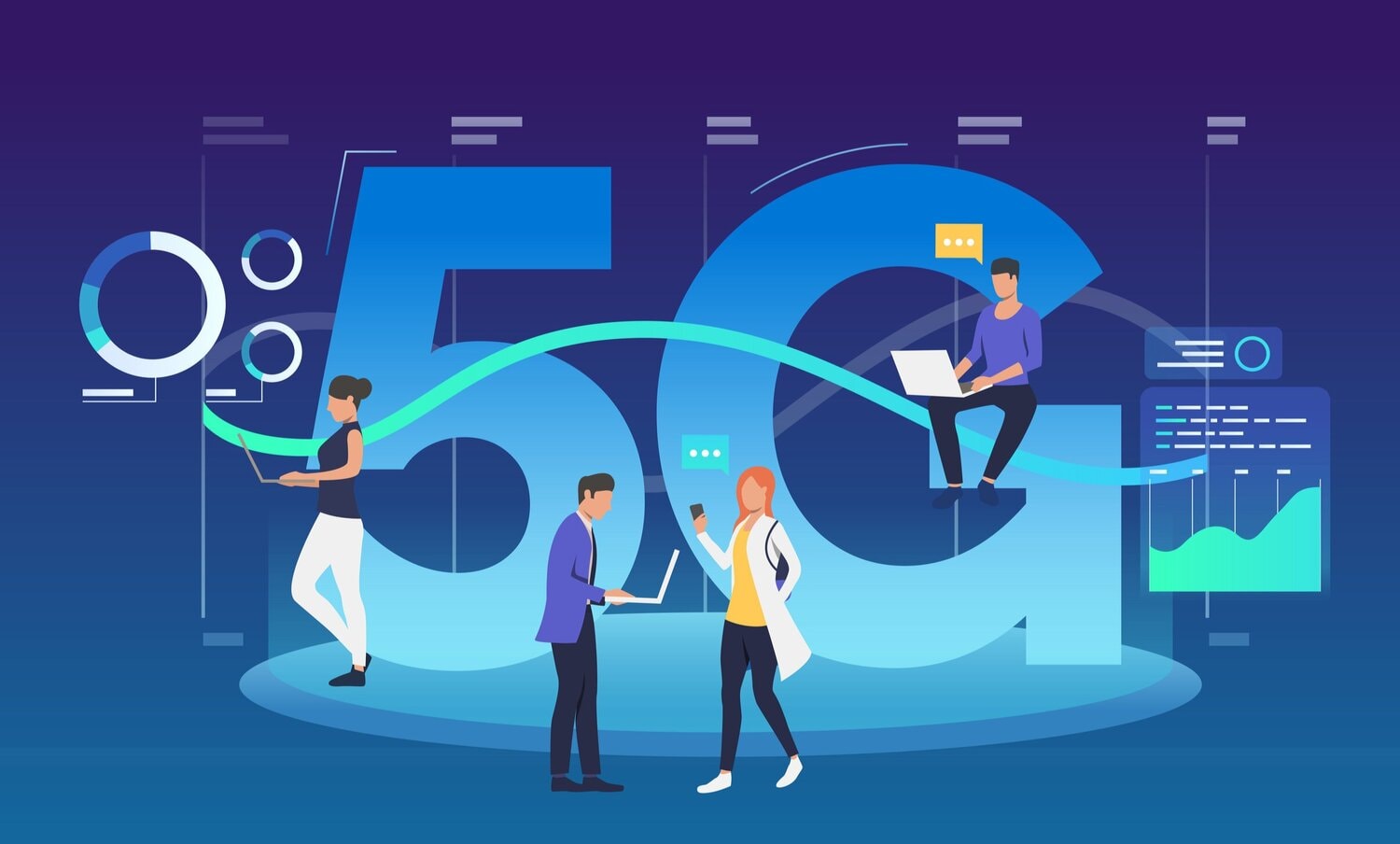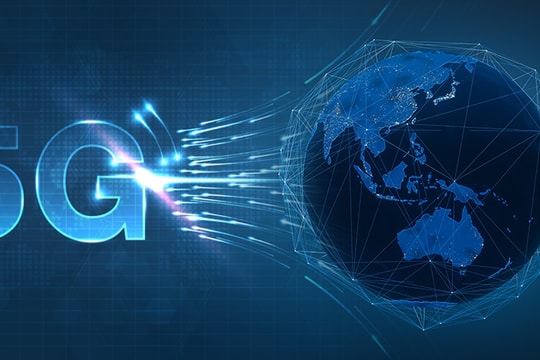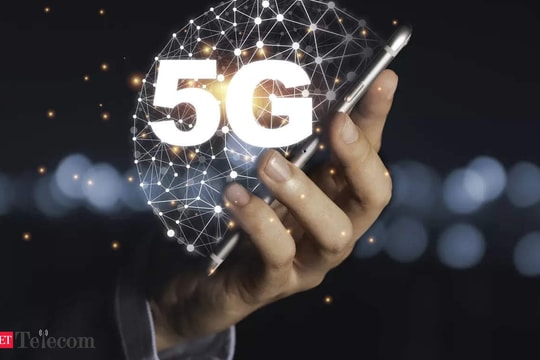The digital divide is emerging in the adoption of 5G technology
The latest report from the Global System for Mobile Operators Association (GSMA) has shown that despite the rapid development of 5G technology, a digital divide still exists in the deployment and application process.
By the end of 2023, 5G networks had recorded a significant leap forward, with the number of connections globally surpassing an impressive 1.5 billion. This rapid growth has affirmed 5G's position as the fastest growing mobile technology in history. However, despite the remarkable achievements, the picture of 5G coverage is not uniform.

Developed countries with strong economies have quickly seized the opportunity and deployed 5G networks widely, providing people with high-speed, stable connectivity experiences. In contrast, in low- and middle-income countries, the 5G deployment process is still facing many difficulties due to limitations in infrastructure, financial and technical resources.
The GSMA report highlighted several key factors contributing to the digital divide in 5G network deployments globally, including:
1. Difference in coverage
By 2023, this gap will be even more pronounced, with high-income countries achieving an average coverage of 89%, more than 2.5 times higher than the 34% of low- and middle-income countries.
The growth in global 5G coverage is largely driven by two major economies, China and India. Both countries have deployed 5G networks extensively, especially in urban areas and economic centers. However, this expansion has not been enough to significantly narrow the digital divide between countries.
The worrying reality is that more than 100 countries, mostly low- and middle-income countries, will not have 5G networks by the end of 2023. This means that billions of people around the world still do not have access to the latest generation of mobile technology, leading to inequality in access to information and digital services.
2. Future penetration gap
The 5G digital divide between high-income countries and low- and middle-income countries is expected to widen significantly by 2030. While developed countries are expected to reach 5G penetration levels of up to 120%, far exceeding the level needed for full coverage, low- and middle-income countries will only reach 55%. This means that a large proportion of the population in low- and middle-income countries will continue to rely on older generation mobile technologies such as 4G or even 3G.
3. 5G terminal costs
Affordability of 5G terminals remains a significant barrier, especially in low- and middle-income countries. Although 5G terminal prices have come down significantly since the early years of its launch, the average price of $100-200 for a 5G phone is still too high compared to per capita income in many low- and middle-income countries.
Compared to 3G/4G terminals, the average price is only around $50, a price that many people in these countries still find difficult to pay. This price difference further widens the digital divide, making access to 5G technology out of reach for the majority of people in low- and middle-income countries.
4. Benefits for users
For those lucky enough to experience 5G, the technology brings a real revolution in connectivity. Average 5G download speeds can reach up to 230 Mbps, five times faster than 4G technology, opening the door to completely new online experiences. Downloading large files, watching high-resolution videos or playing online games will be smoother and faster than ever.
Not only that, 5G also facilitates the development of advanced services such as Fixed Wireless Access (FWA). With FWA, users can use 5G waves to connect to the Internet at home, providing high-speed Internet access solutions for remote areas or places where fixed network infrastructure is not yet developed. In countries such as Saudi Arabia and the US, FWA is being widely deployed, helping to narrow the digital divide and expand access to information for people.
Despite the many benefits 5G brings, many people are still unable to enjoy the conveniences that this technology brings. This is mainly due to the large disparities in 5G network access between countries, between urban and rural areas, and between different income groups. This leads to a widening digital divide, increasing inequality and limiting development opportunities for a large part of the world's population.
5. Challenges in network deployment
Even in markets that are considered pioneers in 5G deployment, the full coverage and exploitation of the technology's potential is still limited. Most current network operators are still using the 5G non-standalone (NSA) network architecture, which means they still have to rely on existing 4G infrastructure to provide 5G services. This means that 5G has not really brought into full play its outstanding advantages, especially in applications that require low latency and high bandwidth such as Industry 4.0, telemedicine, and business-to-business (B2B) applications.
To fully exploit the potential of 5G, network operators need to transition to a 5G standalone (SA) network architecture. However, deploying SA networks requires a large investment in new infrastructure, including 5G base stations and core network equipment. The high investment costs and long deployment time make many network operators cautious and not ready to invest heavily in 5G SA networks. In addition, the profits from current 5G services are not attractive enough to convince network operators to invest in a completely new technology.
6. The 4G network expansion policy is still of interest to policymakers.
Despite the promise of 5G as a life-changing technology, the global rollout of the technology has been slow. 5G deployment has been slower than expected, especially in developing regions such as Sub-Saharan Africa, South Asia, the Middle East and North Africa (MENA) and Latin America. This means that 4G will continue to be the mainstay of providing mobile internet connectivity to billions of people in these regions for at least the next decade.
Research predicts that by 2030, 3G and 4G will still account for more than 60% of all mobile broadband connections in developing regions. This is mainly due to the high cost of deploying 5G, lack of infrastructure, and the lack of demand for 5G services.
It is absolutely necessary for policymakers to continue to focus on expanding 4G networks in the current period to help people access information, health services, and online education better. In addition, expanding 4G networks will help narrow the digital divide between urban and rural areas, in developed and developing countries.
While 5G promises to revolutionize technology and global connectivity, the reality is that its enormous potential remains untapped and even risks increasing digital inequality. In many low- and middle-income countries, 5G deployment is still very limited, leading to a widening digital divide between countries.
In short, closing the digital divide is a long-term process that requires the cooperation of many parties. Balancing the development of 5G and upgrading 4G is necessary to ensure that no one is left behind in the digital revolution.





